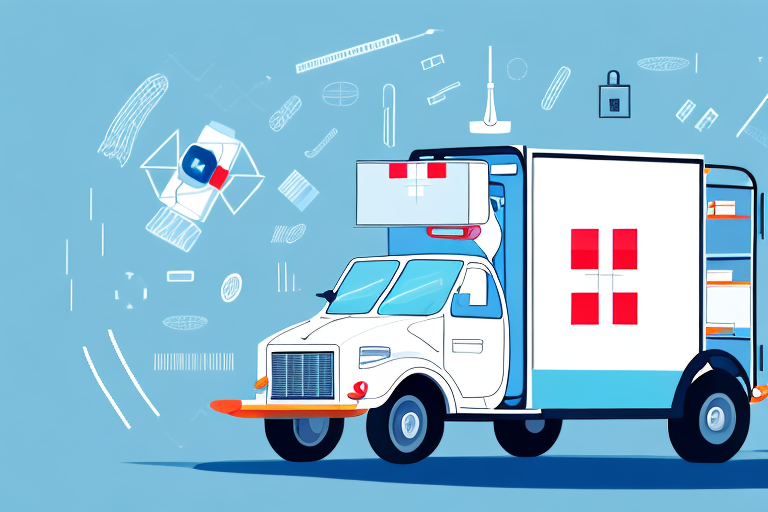Introduction to Medical Equipment Delivery Jobs
Are you interested in pursuing a career in medical equipment delivery? This industry plays a crucial role in ensuring that patients have access to vital equipment, requiring individuals who are passionate, detail-oriented, and reliable. In this article, we will explore everything you need to know about medical equipment delivery jobs and how to find success in this exciting and rewarding field.
What is Medical Equipment Delivery?
Job Responsibilities
Medical equipment delivery professionals are responsible for transporting medical equipment to various locations, including hospitals, clinics, and patients' homes. The equipment can range from small items like oxygen tanks and handheld devices to larger machines such as hospital beds and X-ray machines. Key responsibilities include:
- Ensuring safe and timely delivery of equipment
- Navigating complex transit routes
- Coordinating with healthcare providers and patients
- Setting up and installing equipment at the destination
- Providing basic training on equipment usage
Importance in Healthcare
Medical equipment delivery is vital for patient care. According to the Centers for Disease Control and Prevention (CDC), timely delivery of medical equipment can significantly impact patient outcomes, especially in remote or underserved areas. Efficient delivery ensures that medical facilities operate smoothly and patients receive the necessary equipment without delays.
Qualifications and Skills Required
Educational and Licensing Requirements
Most employers require a high school diploma or equivalent for medical equipment delivery positions. Additionally, candidates must possess a valid driver’s license with a clean driving record. Some positions may require a commercial driver’s license (CDL), especially when handling larger equipment.
Essential Skills and Attributes
Successful medical equipment delivery professionals typically demonstrate the following skills and attributes:
- Excellent time-management skills
- Attention to detail
- Effective communication abilities
- Physical strength for handling heavy equipment
- Basic understanding of medical terminology and equipment
Experience in a healthcare setting or with medical professionals can provide a competitive edge in the hiring process.
Finding and Applying for Jobs
Where to Look for Job Openings
There are numerous resources available for finding medical equipment delivery jobs, including:
- Job boards like Indeed and LinkedIn
- Healthcare supply companies' career pages
- Hospital and clinic job listings
- Online classifieds such as ZipRecruiter
Networking
Networking is a powerful tool for job seekers. Attending industry events, joining professional associations, and connecting with current professionals in the field can lead to job leads and recommendations.
Application Process and Interview Tips
Preparing Application Materials
When applying for a medical equipment delivery job, ensure that your resume and cover letter highlight relevant qualifications and experience. Emphasize your driving record, experience with heavy equipment, and any healthcare-related experience.
Interview Tips
During interviews, be prepared to discuss your experience with logistics, handling equipment, and navigating delivery routes. Demonstrating a strong work ethic, problem-solving abilities, and a positive attitude can make a significant impression. Additionally, research the company and the types of equipment you will be handling to show your genuine interest in the role.
Daily Responsibilities and Challenges
Day-to-Day Tasks
Medical equipment delivery professionals typically spend their days driving, navigating routes, and delivering equipment. Specific tasks include:
- Loading and unloading equipment
- Maintaining accurate inventory records
- Communicating with healthcare providers and patients
- Ensuring equipment is delivered on time and in good condition
- Troubleshooting equipment issues as needed
Common Challenges
Professionals in this field may face several challenges, such as:
- Heavy lifting and physical demands
- Long and irregular hours
- Time-sensitive delivery schedules
- Traveling to remote or hard-to-reach areas
- Handling complex and delicate equipment
Additionally, navigating complex regulations and compliance requirements can add to the complexity of the job.
Overcoming Challenges
To successfully navigate these challenges, it's essential to:
- Maintain a positive attitude and strong work ethic
- Stay organized and manage time effectively
- Develop strong communication and problem-solving skills
- Stay physically and mentally healthy through proper rest and nutrition
- Continuously update knowledge on industry regulations and best practices
Compensation and Career Growth
Salary Expectations and Benefits
The salary for medical equipment delivery jobs typically ranges from $30,000 to $50,000 per year, depending on location and employer. Benefits often include:
- Health insurance
- Paid time off
- Retirement plans
- Opportunities for bonuses or commissions based on performance
Individuals with more experience or specialized training may earn higher salaries and additional benefits.
Growth and Advancement Opportunities
The demand for medical equipment delivery professionals is growing, providing ample opportunities for career advancement. Potential paths include:
- Supervisory or management roles
- Specialization in specific types of equipment
- Transitioning to logistics or supply chain management
- Continuing education and training to stay current with industry advancements
The Future of the Medical Equipment Delivery Industry
The medical equipment delivery industry is expected to grow significantly in the coming years due to an aging population and increasing demand for healthcare services. Innovations in technology, such as route optimization software and advanced tracking systems, are enhancing delivery efficiency and customer satisfaction. Additionally, the rise of telemedicine may create new opportunities for delivering specialized medical equipment directly to patients' homes.
Insights from Experienced Professionals
Experienced medical equipment delivery professionals often share unique stories that highlight the dedication and resilience required in this field. From overcoming unexpected logistical challenges to forming meaningful connections with patients, these experiences provide valuable insights and inspiration for those entering the industry. Learning from seasoned professionals can offer practical tips and a deeper understanding of what it takes to succeed in medical equipment delivery.
In conclusion, a career in medical equipment delivery can be both challenging and rewarding. By understanding the demands of the job, developing the necessary skills and qualifications, and staying up-to-date with industry trends and best practices, delivery professionals can find success and fulfillment in this essential and growing industry.




















